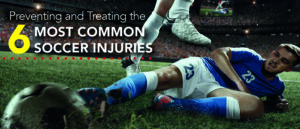News & Blog
FIFA World Cup Fever
Physiotherapy, Massage Therapy, Podiatry, Sports Injury Prevention, Pilates, Healthy Backs

From the die-hard football supporters, to enthusiastic players and children in the park, it’s unlikely that you’ll manage to escape the hype that comes with the FIFA World Cup. Even if you’re not an all year-round supporter/ player you’ll probably find yourself drawn into watching a few matches during the football event of the year.
Football has the power to bring the nation together. Like the Olympic games, it is a human experience that can bring many nationalities and cultures together with no other commonality than the joy of sport.
Football is an international language. FIFA suggests 270 million people play soccer which equates to 4% of the world’s population. But if you take into account the casual kick arounds in the parks, or on the dusty patches of Africa’s huge continent, or in town squares pretty much anywhere in the world, the number is likely to dwarf that figure. EVERYONE from grass roots to multimillionaire players can kick a ball around for free, which makes it a powerful force for change across the globe.
Below are a few facts and figures for injuries that you may hear of during this month’s World Cup.
- Apart from concussions, nearly 83% of injuries occur to the lower limb, most commonly the ankle in men and the knee in women
- Tackling causes nearly a quarter of all injuries
- 40% of all the injuries on a pitch are experienced by Midfielders making them most at risk
- Muscle strains to the thigh – most frequently the hamstring muscle are in the top three injuries
- Muscle injuries are often associated with a burst of acceleration/sprinting, sudden stopping, lunging, sliding (over stretching the muscle) or a high kick. Whereas ankle and knee injuries, where ligaments are strained, occur with cutting, twisting, jumping, changing direction and contact/tackling
- 1 in 5 players will experience a groin injury in a season which makes groin pain a common complaint and may be due to poor kicking technique as well as weakness in the core and pelvis
- And 40% of those groin injuries will cause a player to have to take more than 28 days off from play
There are six printable/downloadable advice sheets on the most common football injuries mentioned above. They provide information of how to both prevent and how they may be treated with professional advice.
You can download the leaflets here
In most cases there is a weakness present including muscle imbalance or control issues. In fact your physical fitness is the single most important factor in preventing football injuries.
- Neuromuscular training for the knee can reduce the incidence of series knee injuries by 3.5 times
- A 3 x a week pre-season proprioceptive training programme resulted in a 7 x decrease in ACL injury and an 87% reduction in the risk of suffering an ankle sprain
- And a strength training programme can reduce the incidence of injuries by nearly half (47%) compared to soccer players who did no additional strength training.
If you want to understand more about any of these aspects then contact us directly. A good training programme should incorporate strength and neuromuscular training, and can go a very long way to helping you reduce the risk of injury.
If you’ve suffered from a football injury or your kids, family or friends have suffered from one, go and check out our downloadable leaflets.
And be sure to check out our Facebook where we are updating you with special posts for the World Cup and sharing informative tips and tricks to help you stay safe on the football pitch.
